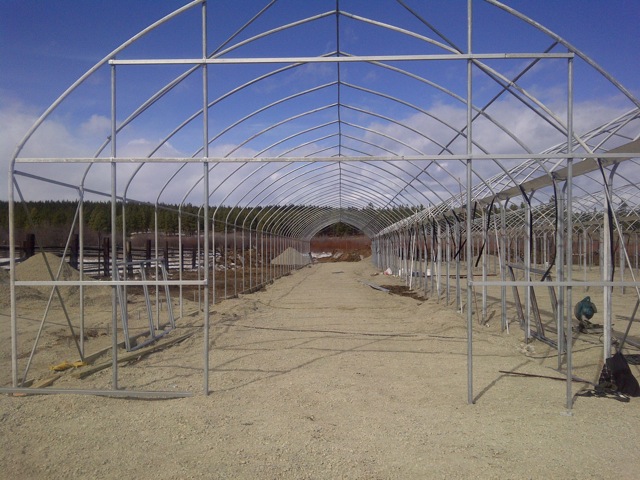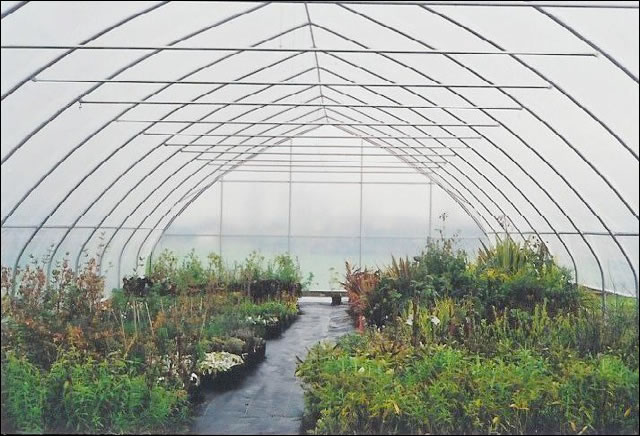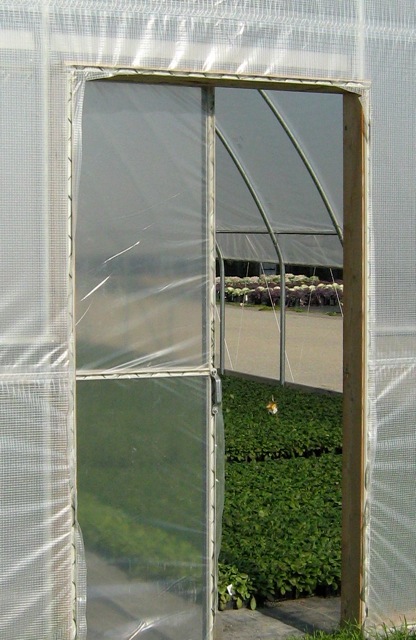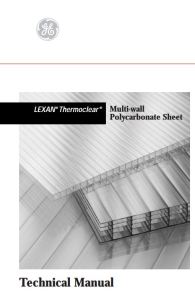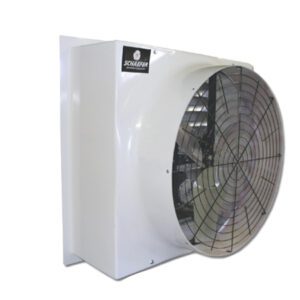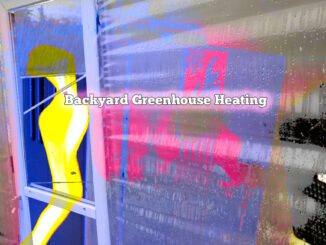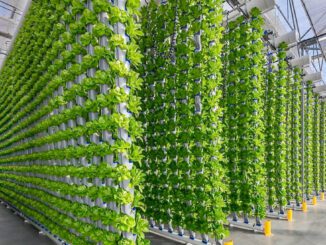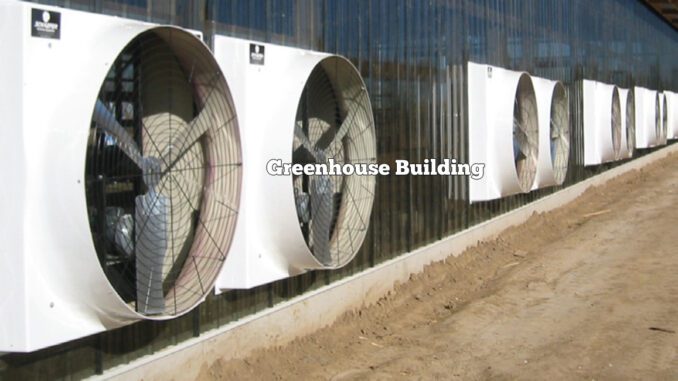
Greenhouse Building
Stuff You Need to Know BEFORE You Get Started
You have decided you would like to grow in a greenhouse building. A quick search of the internet will reveal that there are thousands of companies and hundreds of greenhouse building types to choose from. Prices vary, and so do the materials and styles of greenhouse buildings offered. And that’s just the basic frame.
What about things like greenhouse coverings, ventilation, benching, support systems and automation for your building?
Essentially the range is from modified garden shed or shelter to walk-in buildings.
So which one is going to be right for you—how will you know?
If you are serious about growing, and want the possibility to earn some income from your greenhouse growing endveors, you are going to want to look for something that’s at least 2400 square feet inside. While this may sound big, you’ll be surprised at how quickly it becomes filled—and how much more space you will want to have, once you start to cultivate profits. It really doesn’t take much more time to look after one hundred plants than it does ten—or even thousands if you make the jump to full automation in your greenhouse building project.
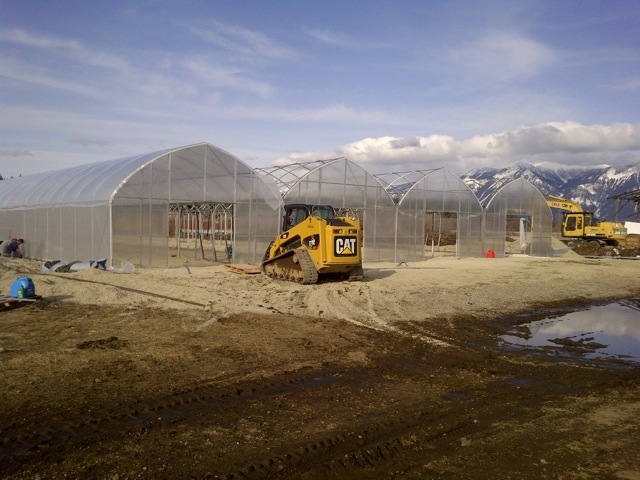
For the backyard gardener looking to extend their growing season and to have the ability to raise lots of transplants early in the season before outdoor weather becomes entirely favorable, a greenhouse of 100 to 200 square feet can serve the purpose well. Of course smaller is possible, but if you have the space to build it, use it—it doesn’t cost much more to build a little bigger—greenhouses are a good example of the term “economies of scale”, ie build it bigger, and it gets cheaper per square foot.
Greenhouse structures are also used for a wide variety of other agriculturally related applications, for example: aquaculture, composting, algae farming, raising livestock and more. Some of these applications will have special considerations over standard greenhouse operations. For example, composting creates electrical charges that can eat galvanized steel tubing—the stuff most greenhouse arches are made from. Here powder coating or wood construction become necessary.
Getting Started
To familiarize yourself with the three most basic greenhouse design concepts (cold frame, freestanding and gutter connect) have a look HERE. These are the basic shapes and layouts to work with.
Note, just about everyone wants lots of straight sidewall in their greenhouse for vertical clearance. However, this means more expense because the building requires considerably more engineering and materials to meet basic farm building codes. A straight or tall sidewall means lots more wind load on the building. Wind crumples more greenhouses than snow—something you don’t want to learn the hard way because you simply added longer ground posts to make more straight sidewall on a gothic arch style freestanding or cold frame structure. If you must have lots of vertical, go gutter connect—it’s what the building is designed for, although be prepared to pay significantly more per square foot on most instals.
Greenhouse Profile Selection
The arch shape of gothic (point at rounded roof) arch styles greenhouse arches is superior over quonset (half circle arches) for one main reason and that’s snow shed and wind deflection. A perfect half circle is actually rather flat on top—this is where snow can accumulate. As well, when the sun is lower on the horizon in winter months, you’ll get more light hitting your plants with a gothic style arch versus quonset due to the pitch of the angled sidewalls.
Interior Spacing Usage*Important*
Very few greenhouses have 100% space use efficiency. Average is closer to 65% and can be improved to near 90% with rolling benches. Over 100% is possible with A-Frame racking.
So consider your cropping target levels—how much more building will you need so that you have practical working aisle ways and areas for materials storage and handling. Some space for electrical and water may also be required, or may be housed independently in nearby outbuildings or sheds.
Ground Anchoring System
In most cases, ground driven posts will suffice. These are lengths of heavier gauge steel tubing, usually about three feet long that get pounded into the ground with about 8 to 12” sticking up above grade. The base on each side of the greenhouse arch gets securely bolted into the ground driven post. Concrete may also be used but adds significant cost to the installation and is typically not necessary. If building on a concrete pad, flat bottom brackets are a good option, and work the same as other ground anchoring systems with the exception that concrete fasteners are required.
Gable End Framing
Besides the arches, purlins (tubing that connects the arches, down the length), ground anchors, trusses and wind braces that make up the “skeleton” of a greenhouse for covering, greenhouses should have the ends framed in. On a smaller greenhouse, this can be a big part of the expense. On a longer greenhouse, the cost is spread out more.
Gable end framing adds strength to the building and requires consideration for things like materials handling, ie door size and placements, fresh air intake shutters, exhaust fan mounts, and inflation fans (for double poly coverings).
To save money, lumber can be a cost effective alternative to galvanized steel tubing and an be a little more forgiving to work with and adjust as needed, ie shutter openings, door framing, etc.
Coverings
There are many types of excellent materials designed for covering greenhouses. This an area you should research further, but in general terms, you can bank on the following:
Greenhouse Poly Coverings-different than the stuff at your building center, and comes in rolls up to 48′ wide by several hundred feet long and is rated for 1 year, 2 year or 4 year applications. Special treatments for I.R heat retention and anti-condensate properties are available.
While the material itself doesn’t insulate much, the fact that it can be installed with no cracks helps make it the most energy conservative choice when you double up the layers and inflate them with a small fan. This air cushion provides good insulation and snow shed and still offers near 85% light.
Glass Coverings-typically used for covering Dutch Venlo professional greenhouses. Glass lets in lots of light, but is more difficult to install and lets air escape freely through all of the cracks.
Polycarbonate-a semi rigid and very durable covering with lots of light transmission when installed as a single walled material (corrugated) versus twin wall, which is typically supplied in 6-8mm thicknesses.
Polycarbonate is the most expensive between the three when compared to greenhouse poly or glass but is easy to install on a wide variety of frame type and comes with long term durability guarantees. You could literally hammer on the stuff and not break it—while still getting lots of light with the single walled variety.
Greenhouse Ventilation
Greenhouses require ventilation. If air is not exchanged it can become either or both too hot or too humid very quickly. For plants to grow healthy, they also need carbon dioxide from outside air—unless supplied otherwise.
Exhaust fans and motorized intake shutters have been the standard, but many growers are looking to get away with electrical appliances where they are not necessary. Mechanical fan ventilation is often required to “active ventilation” in the greenhouse trade, while roof vents and roll up side walls are called “passive”. A well designed passive system can help keep it just a few degree above ambient, even on the warmest days. Evaorpative cooling pads with fan exhaust can keep it cooler than ambient, especially if energy curtains or shade cloth are also utilized.
Fan cooling requires lots of CFM for summer cooling, while only about 25% the capacity for simple air exchanges, ie winter venting. Shutters with one square foot of opening per 700 CFM of exhaust capacity are recommended to reduce performance losses due to static pressure.
Don’t Forget…
There are LOTS of expenses you will need to consider, besides the cost of the building iteslf. Don’t get caught short on budget, halting your project before it can get off of the ground becuase you overlooked important stuff like:
- electrical
- plumbing
- drainage
- benching
- supports
- doors
- site preparation
- engineering
- permits
- equipment rentals
- fasteners
- etc.
Special Thanks to Steel Greenhouse for use of images.

